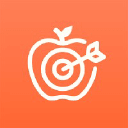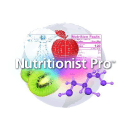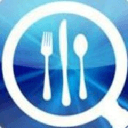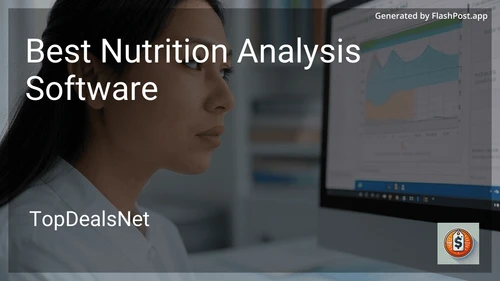Best Nutrition Analysis Software in November 2025

Cronometer
- Accurate food database
- Calorie and nutrient tracking
- Bio-metric data logging
- Integrations with wearable devices
- Custom reports
- Community support

Nutritionist Pro
- Extensive global food database
- Nutritional analysis and labeling
- Meal planning tools
- Recipe analysis
- Regulatory compliance support
- Mobile access and updates

Food Processor by ESHA Research
- Comprehensive nutrient database
- Customizable reports and labels
- Dietary assessment tools
- Recipe and menu analysis
- Allergen and ingredient alerts
- Regulatory compliance features

DietMaster Pro
- Meal planning and nutrition analysis
- Fitness and nutrition tracking
- Custom branded nutrition portals
- Group management and support
- Recipe and grocery list generator
- Mobile app integration

MyFitnessPal
- Extensive food database
- Easy meal logging and tracking
- Exercise tracking
- Community forums and support
- Personalized goals and insights
- Integrations with fitness devices
In today's health-conscious world, understanding the nutritional value of what we consume is more important than ever. Nutrition analysis software plays a crucial role for dietitians, nutritionists, and food enthusiasts alike in achieving precise dietary assessments. This article explores what nutrition analysis software is, its key features, and how to choose the best one for your needs.
What is Nutrition Analysis Software?
Nutrition analysis software is a powerful tool used to evaluate the nutritional content of various food items and recipes. It helps users understand the macro and micronutrient profiles of their meals, making it easier to adhere to dietary guidelines. By converting complex data into easily understandable information, these software programs aid in creating balanced meals, managing dietary concerns, and supporting overall health goals.
Key Features of Nutrition Analysis Software
While each nutrition analysis tool comes with unique functionalities, certain key features are critical for effective nutritional evaluation:
1. Comprehensive Database
A robust nutrition analysis program utilizes an extensive and up-to-date food database. This includes a diverse range of food items, from fresh produce to packaged goods, ensuring accurate nutrient profiling.
2. Nutrient Tracking
Users should seek software that tracks both macronutrients (carbohydrates, fats, proteins) and micronutrients (vitamins and minerals). Comprehensive nutrient tracking helps in addressing specific dietary needs and achieving balance.
3. Recipe and Meal Analysis
The ability to analyze entire recipes and meals allows users to see the cumulative nutritional content. This is especially beneficial for meal planning and ensuring nutritional goals are met.
4. Customization Options
Customization is key for personalizing dietary analysis. Look for software that allows the addition of new foods, customization of serving sizes, and adjustment for cooking methods, as these can affect nutrient content.
5. Reporting and Visualization
Clear reporting and data visualization are essential for interpreting nutritional data effectively. Graphical representations such as charts and graphs can enhance understanding and communication of nutritional information.
How to Choose the Best Nutrition Analysis Software
Selecting the ideal nutrition analysis software depends on various factors. Here’s a guide to help you make an informed choice:
1. Define Your Needs
Consider what you aim to achieve with the software. Are you a professional dietitian seeking detailed nutrient reports, or are you a home cook wanting basic meal analysis? Define your needs to narrow down your options.
2. Evaluate User Interface and Experience
A user-friendly interface is vital for seamless operation. Opt for software that is intuitive and easy to navigate, ensuring you can focus on analyzing data without a steep learning curve.
3. Check for Regular Updates
Nutrition science is ever-evolving. Make sure the software you choose is regularly updated to include the latest dietary information and food items for accurate analysis.
4. Consider Integration Capabilities
For those already using health or dietary platforms, integration capabilities can be a major advantage. Check if the software can be linked with existing systems for streamlined data management.
5. Analyze Cost vs. Features
Pricing can be a deciding factor. Compare the cost of the software against the features offered to ensure it provides good value for your investment. Free or lower-cost options might suffice for basic needs, while more sophisticated software might be worth the extra expense for professionals.
Conclusion
Finding the best nutrition analysis software requires careful consideration of your individual needs, the software's features, and how it aligns with your dietary goals. Whether you are managing personal nutrition, creating diet plans for clients, or analyzing recipes, having the right tool can make all the difference in promoting optimal health.
